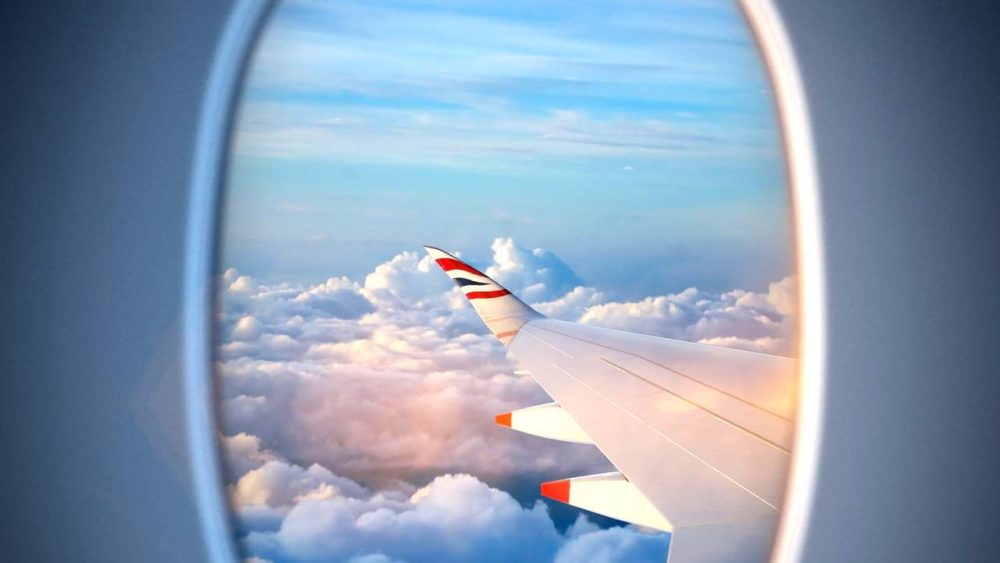The IAG (LSE: IAG) share price has been one of the worst-performing investments in the FTSE 100 over the past two years. It is easy to see why. The airline group has suffered severely in the pandemic. In the first half of 2020, its fleet was virtually grounded. Even though the skies are opening up again, consumers are not rushing to return.
That being said, the outlook for the company is improving. The key transatlantic market is reopening in November, and countries around the world are steadily reducing travel restrictions.
One Killer Stock For The Cybersecurity Surge
Cybersecurity is surging, with experts predicting that the cybersecurity market will reach US$366 billion by 2028 — more than double what it is today!
And with that kind of growth, this North American company stands to be the biggest winner.
Because their patented “self-repairing” technology is changing the cybersecurity landscape as we know it…
We think it has the potential to become the next famous tech success story. In fact, we think it could become as big… or even BIGGER than Shopify.
Click here to see how you can uncover the name of this North American stock that’s taking over Silicon Valley, one device at a time…
Despite this progress, the events of the past 18 months have left deep scars on the group and it could be years before the business can return to full health.
Still, I reckon the stock looks like it could be an attractive recovery investment over the next few years.
IAG share price potential
IAG’s second-quarter results show the scale of the challenges the group is facing. The owner of British Airways reported passenger revenues for the six months to the end of June of €1.1bn, down 72% on the figure reported for the same period in 2020.
What is notable about this figure is that the world was in lockdown for the majority of the first six months of 2020. To put it another way, IAG’s performance has deteriorated as the pandemic has dragged on.
The one ‘bright’ spot was the group’s bottom line. Thanks to cost-cutting efforts, the company reported a much narrower loss after tax of just over €2bn in the first six months of 2021, compared to €3.8bn in the same period last year.
This is a bit of a Catch-22 situation. It has been able to reduce costs by cutting staff and mothballing planes. However, as it ramps up activity, IAG will have to hire new staff and put more plans in the sky. All of this will cost money, which will increase the group’s cost base.
Management was planning to increase passenger capacity to 45% of 2019 capacity for the third quarter of 2021. That was up from just under 22% in the second quarter.
Conservative target
Based on recent developments, I think this is a conservative target. We will have to wait for the company to provide more information to the market. But with the reopening of the transatlantic travel route, and the removal of countries from the UK’s red list, IAG should be moving to capitalise on increasing customer demand.
Indeed, it has been reported that demand for flights between the UK and the US, which have been mostly unavailable since the pandemic began, are attracting huge demand. Passengers are paying nearly £2,000 for an economy seat on the first flight at the beginning of November.
Another example of how the company is rising to meet the challenge of increasing demand is its decision to boost its flight schedule over the Christmas period to Barbados. The group is adding an extra 3,000 seats in December and January to capitalise on demand.
All in all, it looks to me as if the airline industry is finally starting to recover after 18 months of disruption. IAG has the financial firepower and brand strength to capitalise on this recovery. Nevertheless, it is not going to be plain sailing for the group.
Running an airline is challenging at the best of times. Coming out of the pandemic, not only will the group have to encourage customers that it is safe to fly again, but it will also have to deal with increased competition. The airline industry has lost hundreds of billions of dollars over the past two years, and IAG’s competitors are fighting tooth and nail to win customers’ business in the recovery. The airline industry is notorious for aggressive price wars, which can decimate profit margins and earnings.
Competitive market
IAG’s most lucrative market is the transatlantic route. This market is also incredibly competitive. Before the pandemic, BA and its peers had to contend with the likes of Norwegian, which offered a low-cost stripped-back service.
Norwegian culled its loss-making international journeys in the pandemic, but several competitors on the transatlantic route have now stepped into its shoes. This shows just how competitive the market is and the challenges IAG will have to overcome over the next few years.
The business cannot really afford to chase market share aggressively. The company is carrying €20bn of debt, excluding pension obligations. BA has one of the largest pension schemes in the country, and it is currently in deficit. The airline has to fork out £40m a month to fill the gap.
On top of these pressures, costs are rising. Non-fuel costs per available seat km (ASK) increased 33% in the first half of 2021.
Rising costs and a weak balance sheet are definitely not the qualities I want to see in a company that operates in a competitive market.
Considering all of the above, I think the outlook for IAG over the next five years is quite mixed.
Analysts believe the airline industry will return to 2019 levels of activity by 2023. This suggests the group is set for several more years of losses.
IAG share price five-year outlook
I do not doubt that IAG can sustain further losses. At the end of the second quarter, the firm reported €10.2bn of liquidity. That should be more than enough to support the company as revenues recover.
I am more worried about IAG ability to return to 2019 levels of profitability considering rising costs, the firm’s debt load and competition in the sector. I think there is a strong chance these headwinds could suppress profitability even after the industry recovers from 2023.
With that in mind, while I believe the outlook for the IAG share price is improving, I do not think the stock will return to 2019 levels in the next five years. I reckon it will take many years for the group to heal from the scars of the pandemic, and there is no certainty that it ever will.
Still, I am a patient, long-term investor. As I noted at the beginning of this article, I would buy the shares today as a recovery play.
This post was originally published on Motley Fool







